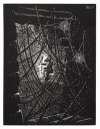Mario
Schifano
Mario Schifano, a pivotal figure in post-war Italian art, revolutionised the visual language with his Pop Art sensibility and innovative use of media. If you’re looking for Mario Schifano original prints and editions for sale or would like to sell, request a complimentary valuation and browse our network’s most in-demand works.
Mario Schifano art for sale
Discover Mario Schifano prints for sale, exclusively available through our private network of collectors. Explore signed and unsigned screenprints, lithographs, digital prints, and rare editioned proof prints by era-defining blue chip artists.
Sell Your Art
with Us
with Us
Join Our Network of Collectors. Buy, Sell and Track Demand
Biography
Born in Homs, Libya, in 1934, Schifano's early life was marked by relocation to Rome, where the cultural vibrancy of post-war Italy would heavily shape his artistic trajectory. Displaying a penchant for art from a young age, Schifano immersed himself in the raw and dynamic Roman art scene. His formal education, although sporadic, was complemented by his autodidactic pursuit of knowledge in the arts, leading to an early career defined by experimentation and self-discovery.
Schifano's artistic development saw him traverse through various movements and styles, initially influenced by the gestural strokes of Abstract Expressionism. However, it was his embrace of Pop Art that distinguished his work, as he incorporated commercial imagery, brand logos, and media references into his canvases. His critical engagement with consumer culture and mass media led to the creation of provocative and compelling works that reflected the zeitgeist of the 1960s and 70s.
Throughout his career, Schifano's work was punctuated by key periods of innovation. His Monochrome series, which began in the late 1950s, focused on the use of single colours and was a harbinger of Minimalism. Moving into the 1960s, his Anemone series channelled the energy of Pop Art through vividly coloured, flower-like shapes that vibrated against monochromatic backgrounds. Schifano's adoption of enamel and acrylic paints, along with unconventional materials like Perspex and aluminium foil, further distinguished his artistic voice.
Schifano's collaborations with other contemporary artists and intellectuals, along with his engagement with the burgeoning counter-culture, played pivotal roles in his creative evolution. His work was influenced by his interactions with members of the Italian art collective Gruppo 63, and the Arte Povera movement, though he never fully assimilated into any one group.
The artist's major exhibitions and achievements are numerous, but notably, his participation in the Venice Biennale in 1964, 1978, 1982, and 1994 along with a retrospective at the National Gallery of Modern Art in Rome, underscored his prominence in the art world. Schifano's legacy is one of an unyielding exploration of the visual language and its capacity to encapsulate and critique the society of his time.
Mario Schifano's art remains a vital part of contemporary dialogue, his works continuing to challenge and inspire new generations. His passage through various art movements and his relentless pursuit of expressive freedom have left an indelible mark on the landscape of Italian and international art.














